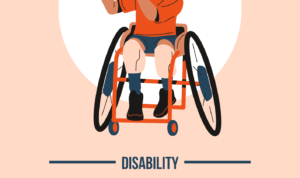Health Insurance Assistance is a critical resource for millions of Americans seeking affordable and comprehensive healthcare coverage. With evolving policies, expanded eligibility criteria, and new state-funded programs, understanding the available assistance options in 2025 is essential. This article explores key updates, eligibility requirements, and strategies to maximize benefits, ensuring individuals and families can access the care they need without financial strain.
Federal Health Insurance Assistance Programs
Health Insurance Assistance at the federal level remains anchored by the Affordable Care Act (ACA), Medicaid, and Medicare. For 2025, ACA subsidies have been expanded under the Inflation Reduction Act, temporarily removing the 400% federal poverty level (FPL) subsidy cliff. This means even households earning above $60,240 (individuals) or $124,800 (families of four) may qualify for sliding-scale premium tax credits . Additionally, cost-sharing reductions (CSRs) for Silver plans are available to those earning between 100%-250% FPL, lowering deductibles and out-of-pocket costs .
Medicaid, meanwhile, faces potential changes due to proposed federal funding cuts and work requirements. While the Biden administration streamlined enrollment and extended continuous eligibility, the 2025 budget reconciliation bill could impose per-capita caps or lifetime limits, risking coverage for 18.5 million non-elderly, non-disabled enrollees . Health Insurance Assistance advocates emphasize the importance of state-level Medicaid expansions, as 40 states now cover adults up to 138% FPL, offering a safety net for low-income households .
State-Funded Health Insurance Assistance Initiatives
States are increasingly supplementing federal programs with localized Health Insurance Assistance. California, for example, eliminated deductibles for enrollees earning up to 250% FPL in 2024 and expanded this to all Covered California applicants in 2025 . New Mexico upgraded its State Out-of-Pocket Assistance (SOPA) to provide Platinum-level plans (90% actuarial value) for households up to 400% FPL, a significant jump from 300% in 2024 . Conversely, Colorado reduced its state-funded CSR eligibility from 250% to 200% FPL, highlighting the variability in state approaches .
Michigan’s Health Insurance Assistance programs also saw updates, with 90% of enrollees qualifying for subsidies in 2024, many paying less than $10 monthly . Similarly, Oregon introduced its Basic Health Program, “Oregon Health Plan Bridge,” transitioning Marketplace enrollees earning 138%-200% FPL to state-managed plans with zero premiums . These initiatives underscore the role of state innovation in bridging coverage gaps.
Special Enrollment and Demographic-Specific Assistance
Health Insurance Assistance extends to unique populations, including DACA recipients, who gained Marketplace access in 2025 despite legal challenges in 19 states . This change is projected to enroll 100,000 additional individuals. Medicare beneficiaries also benefit from tailored assistance, with 2025 updates capping Part D out-of-pocket costs at $2,000 and introducing payment plans for prescription drugs .
Special Enrollment Periods (SEPs) remain vital for those experiencing life events like job loss or relocation. For example, Medicare Advantage enrollees can switch plans between January 1–March 31, while Medicaid recipients in integrated Dual Special Needs Plans (D-SNPs) can adjust coverage monthly . **Health Insurance Assistance** navigators and SHIP counselors play a pivotal role in guiding beneficiaries through these timelines .
Challenges and Advocacy in Health Insurance Assistance
Despite progress, challenges persist. Proposed Medicaid work requirements could strip coverage from 1.5 million adults, as seen in Arkansas’ 2018–2019 experiment where 18,000 lost benefits due to administrative hurdles . Advocacy groups warn that lifetime Medicaid caps, as proposed in Project 2025, would disproportionately harm non-expansion states like Texas, where eligibility thresholds are as low as 12% FPL .
Premiums for ACA plans are also rising by 6–7% in 2025, though subsidies shield 93% of enrollees from full costs . Health Insurance Assistance programs must therefore prioritize outreach, especially in states like Georgia, which transitioned to a state-run exchange (Georgia Access) in 2025, requiring residents to navigate new platforms .
Health Insurance Assistance is more accessible than ever, yet systemic risks and complexity demand proactive engagement. Key steps include:
- Reviewing Subsidy Eligibility: Use updated FPL charts and calculators to estimate premium tax credits .
- Exploring State Programs: Investigate state-funded CSRs, Medicaid expansions, or Basic Health Plans .
- Leveraging Enrollment Support: Consult SHIP counselors, agents, or Marketplace assisters for personalized guidance .
- Monitoring Policy Changes: Stay informed about Medicaid reforms, DACA rulings, and Medicare updates .
By understanding these dynamics, individuals can secure affordable coverage, while policymakers must safeguard **Health Insurance Assistance** programs from cuts that jeopardize public health and economic stability.







